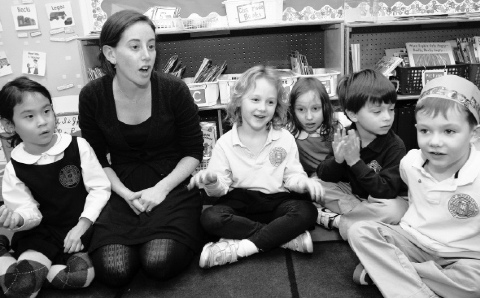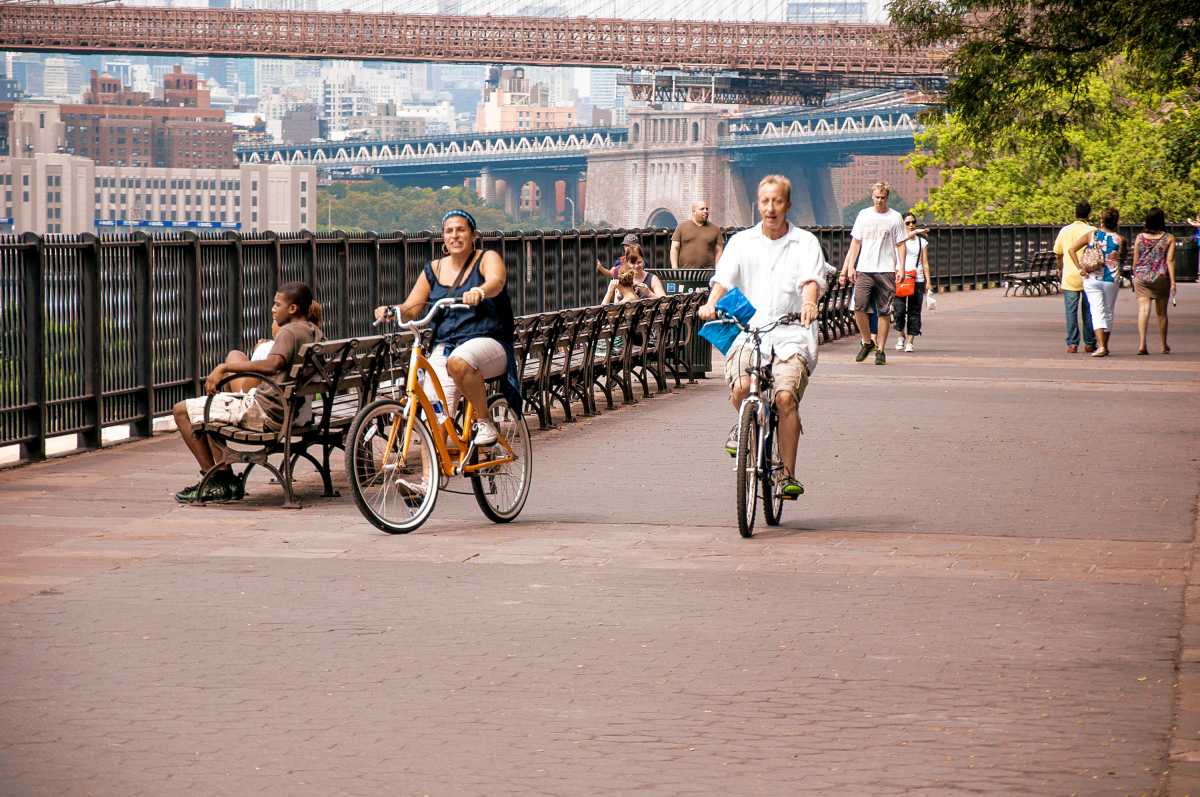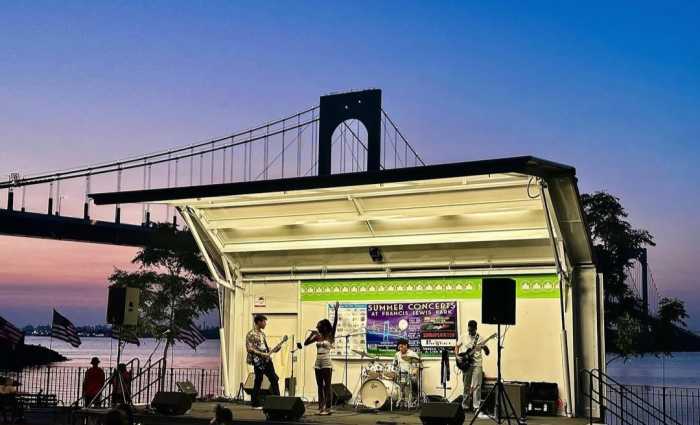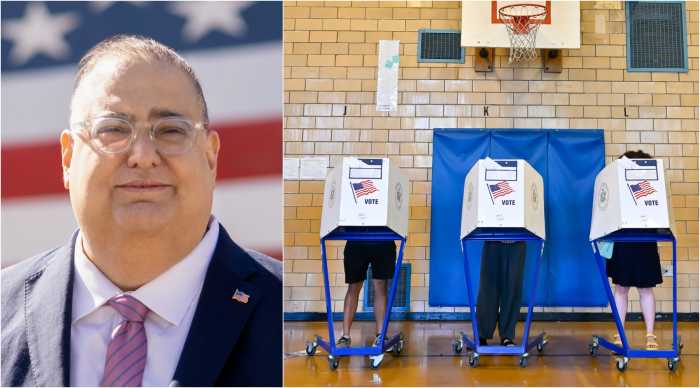By Julie Shapiro
Dana Haddad arrived at Claremont Preparatory School in the fall of 2006 to find that three students and one teacher had an entire floor to themselves.
In its first years, the fledgling private school at 41 Broad St. did not come close to filling its capacious 125,000 square feet. There were only three students in the eighth grade last year and the school chose to delay expanding into a high school. Haddad’s first decision as the school’s director of admissions was to close two of the school’s 11 floors.
“We needed to build community first,” Haddad recalled this week.
The concern over too few students rattling around in too much space seems almost laughable now, as Claremont Prep has grown rapidly to 475 students and is weeks away from signing a lease on additional space Downtown to create a high school. Claremont opened in 2005 as a K-8 school with 54 students and has since added programs for 3 and 4-year-olds.
“We knew that if we built the building, we could fill the building,” said Irwin Shlachter, the school’s headmaster.
The school expanded from three to seven kindergarten classes this fall after receiving hundreds of applications last year. And applications for next year are pouring in, as Claremont’s reputation spreads and concerns about public school overcrowding grow. As of Oct. 31, Claremont’s kindergarten applications were up 54 percent compared to this time last year, while applications for the rest of the school were up 40 percent, Haddad said.
Shlachter had wondered if the economic downturn would shrink the applicant pool this year, but he got his answer as parents packed open houses and booked interview slots solid.
“The last thing parents will compromise is their kids’ education,” Shlachter said. “[The economy] hasn’t hurt us at all.”
Many of the Lower Manhattan parents who visited the school in the past month told Shlachter they were concerned about the large classes in public elementary schools, as unprecedented numbers of students squeeze into too-small facilities.
“Clearly, no one envisioned the kind of growth Lower Manhattan experienced in the last several years, and with that, a need for more schools,” Shlachter said. “We’re hearing this resoundingly.”
Claremont’s classes never have more than 20 students and always have two full-time teachers, plus floaters and specialists. While local public schools have closed music and computer rooms, Claremont has a whole floor devoted to specialty classes like art and woodworking. Students take swimming lessons in Claremont’s basement pool and play on a custom-designed roof deck. The school’s auditorium is the former Bank of America international building’s sweeping lobby, restored to its 1920s glory.
The individual attention and high-tech facilities at Claremont do not come cheap. Tuition ranges from $20,625 for the 3-year-old program to $29,800 for the K-8 program. The high school will top $30,000 a year. Eighteen percent of the student body receives financial aid, with 10 percent of students receiving a scholarship covering over 50 percent of tuition.
Claremont’s high school will begin next year with 70 ninth-grade students in the current building and then will expand into an undisclosed nearby space the following year. The high school will offer internships on Wall St. and allow students to take classes at local universities, Shlachter said.
Claremont students tend to outpace their public school peers academically, Haddad said.
Mahgdalen, 9, whose mother PD Cagliastro works for Claremont’s parent organization, MetSchools, read “Lord of the Flies” last summer and dressed up as Eva Peron for Halloween. After school, she takes classes in Final Cut Pro editing software at an Apple store.
“I think it’s cool,” Mahgdalen said of Claremont. Her favorite subjects are art, history and science, where she recently did experiments with Styrofoam to learn about density. The bespectacled fourth-grader with long dark braids was separated from some of her friends this year, as Claremont tries to mix the students up, but she already has “three new B.F.F.’s.”
“Kids here are easy to make friends with,” she said. “And there are a lot of good classes.”
Claremont has consistently drawn 60 percent of its population from below 14th St., but students come from all five boroughs and beyond. One student even comes all the way from New Windsor, N.Y., about 60 miles from the city. Haddad initially told the child’s mother that the commute was too far, but the mother said she hoped the shared train ride would allow her to spend more time with her daughter.
As Haddad sorted through an overwhelming number of applications for next year’s class, she described what makes an ideal Claremont student.
“We want children who are curious,” Haddad said. “I look for the sparkle in their eye.”
It’s likely not a coincidence then that this year’s kindergarteners share a bright-eyed look and courteous manner. It was hard to find a frown and impossible to find a tantrum during two recent visits, as even the youngest children appeared eager to listen, help and learn.
Haddad relies on standardized tests and interviews with both children and parents to make her decisions. The deadline for applications is Dec. 1, but Claremont will continue accepting students on a rolling basis as space permits.
This fall Claremont opened an entire floor devoted to the enlarged kindergarten class, with seven classrooms branching off of a central football-shaped play space. Cubbies stuffed with jackets and backpacks line the walls, and every extra nook and cranny is designed to store supplies. Lines of kindergarteners snake past each other on the way to and from the elevator, each class on its own schedule.
Dinah Herrity, 30, has taught kindergarten at the school since it opened, and she likes the new kindergarten-only floor.
“It’s kind of fun,” she said. “Now there are so many teachers, with so many good ideas and so many people to share with.”
On a recent afternoon, Herrity and another teacher supervised 15 kindergarteners during “free choice time” in room K-413. On one wall of the bright classroom hung pictures students drew of their favorite pastimes, with teacher-written explanations underneath. Some of the 5-year-olds said they liked going to the park or on play dates, while another said, “I like to go to Connecticut,” and two said, “I like to go to my country house.” The Museum of Natural History, chess and baseball also made appearances.
Scattered throughout the room, groups of students smiled and joked with each other as they built cities with LEGOs or made paper snowflakes. One girl stopped what she was doing to write another student’s name on an index card and slip it in the “friendship jar.”
A red-haired boy built a tower from blocks and perched toy jets and helicopters on top. “It’s a tower to save the world,” he explained, with the aircraft standing ready to rescue people in emergencies, “like the president.”
The kids are allowed to do whatever they want for free choice, as long as it’s different from what they did the day before, Herrity said.
While the other kids played, Herrity took a blond, blue-eyed boy aside to test him on reading. She pointed to a series of typed words, and he sounded them out.
“Ssss-iiii-tttt,” he read. “Sit!” And then he sat down.
After the boy sounded out “hill,” he pretended to climb one, and after sounding out “kiss,” he puckered up.
Later, between checking on a child who took a tumble and tying another’s shoe, Herrity caught a glimpse of the clock.
“Stop, look and listen,” she sang.
“Okay,” the class sang back, quieting immediately.
Herrity told the students they had five more minutes to play, and when the big hand on the clock reached the 12, they would have to clean up. Everyone agreeably followed directions.
There are no “rules” at Claremont, but rather “community practices” that teachers discuss with the students. The kindergarten class that does the best job following the community practices and safety instructions gets temporary custody of a floppy stuffed dog named Vasco (after explorer Vasco da Gama).
While Claremont is growing, the school is still small enough to do collaborative projects among the grades. Several weeks before the election, the elementary students worked together to make a life-sized mural of what the next president should be. They drew sushi and grapes in his stomach to keep him healthy, a compass in his hand to point the country in the right direction and math in his head to keep track of the Stock Exchange, across the street from the school.
A small blond boy barely bigger than a toddler looked up at the colorful figure as he passed it in the hallway later that day.
“The president gives hope,” he said solemnly. Then he ran off to rejoin his class.
Julie@DowntownExpress.com



































